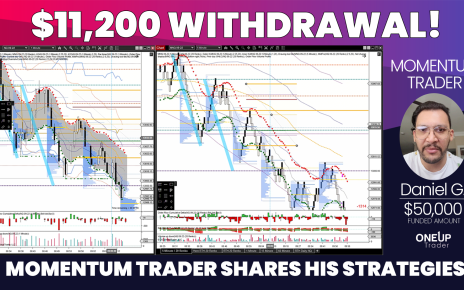There is no doubt that risk management plays a vital role in trading; it arguably separates successful traders from unsuccessful ones. Incorporating risk management in trading helps to eliminate bad trading habits such as fear, greed, clinging to losing trades, etc., and helps prevent you from losing most if not all your trading capital. There are, however, many ways to optimize and manage risk when trading—some are more complex than others.
The Kelly Criterion is one of the most popular ways to optimize and manage risk in trading. This article will throw more light on how we can use the Kelly Criterion to optimize risk and maximize our trading potential.
What is Kelly Criterion?
Kelly Criterion, also known as the Kelly strategy or Kelly Bet, was first developed by the Scientific Researcher John Kelly in 1956, who initially used this strategy to solve the issue of telephone signal noise. Since then, the principles and application of this infamous strategy have been extended into the investment and trading horizon. The formula is also used to calculate the optimal theoretical size for a bet in sports betting.
In the world of trading and investing, the Kelly Criterion is used as an advanced risk management tool to determine how much you can risk on each new trade. Most traders will use it to diversify their portfolios by apportioning a specific risk amount to each investment basket in their portfolio. At the same time, others will use it also to determine how much of their account balance in percentage should be risked on any one trade.
Generally, the primary objective of using the Kelly Strategy will be to maximize account growth; however, we will also focus on using it as a guideline to determine the percentage of our account balance to risk in light of past historical trades.
How to calculate the Kelly Criterion
The calculation of the Kelly percentage number is very straightforward and is dependent on two fundamental parameters from your trading performance statistics. The two parameters are:
- The Win Rate probability (W) – the win rate probability of your trading strategy represents the likelihood that your trade will generate a positive outcome. To calculate it, divide the total number of winning trades by the overall total number of trades.
- Win-to-Loss Ratio (R) – the win-to-loss ratio is easily calculated by dividing the average win per trade by the average loss per trade. The win-to-loss parameter is also known as the Risk (R) multiple.
Once the values of these parameters are known, you can get the Kelly percentage number without breaking a sweat. Remember, the Kelly percentage number will only seek to help you estimate the maximum percentage of your trading account you can risk on the trade.
Kelly Criterion Formula
The Kelly formula is written as:
Kelly percentage number = W – [(1 – W) / R]
Let’s break it down:
- Kelly percentage number – the percentage of your trading account balance you are allowed to risk on any one trade;
- W = Win Rate probability;
- R = Win/Loss Ratio or R multiple;
Kelly Criterion in practice

Here is an easy-to-follow practical example of how the Kelly strategy can be used when trading.
Let us assume you have backtested your trading strategy over 100 trades, and your trading system generated 30 winning trades and 70 losing trades. Also, for every $1 risked, your trading strategy returned an average profit of $3.
To calculate the win rate, you must divide the number of winning trades by the total number of trades taken. Your win rate will therefore be: W = 30 / (30+70) = 0.3
Since the average return for the system is $3 for every $1 risked, the win-to-loss ratio (R) in simple terms will be R = $3/$1 = 3.
Now that you have W and R, you are ready to calculate Kelly percentage number:
Kelly percentage number = 0.3 – [(1 – 0.3) / 3] = 0.067 or 6.67%
The Kelly Criterion is 6.67%, which means to realize maximum account growth, you may risk up to 6.67% of your account balance on a single trade. For example, if you have $10,000 in your trading account, you can risk up to $670 per trade to optimize your account growth.
What does Kelly Criterion tell you?
It is important to note that using the Kelly formula to determine how much should be risked on any one trade requires a great deal of discretion, especially if your trading style involves short-term strategies. If you have a long-term approach to trading, then this can be a great way to allocate risk to specific asset classes or investment portfolio
In our example above, we’ve calculated the Kelly percentage number to be 6.67%. This does not mean you can blindly allocate 6.67% of your account balance on a single trade, especially if you are doing short-term trading. If discretion is not applied, it could lead to disastrous trading performance and cause you to lose all your trading capital within a short period.
When to Ignore the Kelly Criterion
Every mathematical model has its weaknesses, and the Kelly criterion is not an exception. It has a few limitations to consider if you decide to incorporate them into your risk model. As you have seen, the Kelly principle assumes that the Win rate and the Win/Loss ratio will remain the same over the entire life of the trading account or portfolio. This assumption is not realistic in an uncertain market that is constantly changing in price behavior. Ideally, this market uncertainty has to be adjusted to lower the risk of ruin.
In light of the above caveat, it is essential to refrain from using the Kelly Criterion as the only tool to determine your risk and position size. It would help if you always determined your absolute maximum risk tolerance for any trade regardless of what the Kelly percentage number may be telling you.
For example, if you calculate the Kelly percentage and indicate you risk 30% of your equity on just one trade, ignoring the Kelly criterion and sticking to your maximum risk level will make sense.
Risk tolerance level will differ from person to person, so the key factor to consider when determining your maximum risk level is how potential losses can affect your trading psychology and account equity. If you are risk-averse, then it will be better to maintain low-risk amounts on each trade despite the result of the Kelly Criterion. The downside is that your trading account will see relatively smaller profits; however, your losses will also remain small, thus protecting your trading capital.
On the other hand, you may not worry about a higher Kelly percentage number if you are a risk-taker. You may see higher profit potential with your trading account but at the same time expose it to significant losses.
Improving the Kelly Percentage Number
You can make the Kelly percentage more accurate if you base your calculations on more historical trades. There is no general rule at the moment about the optimal number of trades for the most accurate Kelly percentage.
However, it will be ideal to take at least 100 similar trades in a given market before you start using the Kelly percentage number to optimize and manage your risk. It is beneficial to use a trading journal of some sort to journal all your trades and to ensure you have logged details about specific parameters, including the strategy’s R multiple, Profit targets, Win rate, etc.
Conclusion
Risk management is an integral part of every trading system as it helps minimize trading losses and gives investors the chance to maximize their earning potential. As you can see, the Kelly Criterion can be one of the robust risk management tools that can help you determine the optimal percentage of your account balance to risk on any one trade. If you are keen on optimizing your risk management techniques, you may want to test how the Kelly Criterion can help you. Also, learn about the 7 risk management principles to adopt in trading.
Register an account with OneUp Trader, get evaluated, and we will connect you with our funding partners so you can quickly kickstart your career as a trader.





